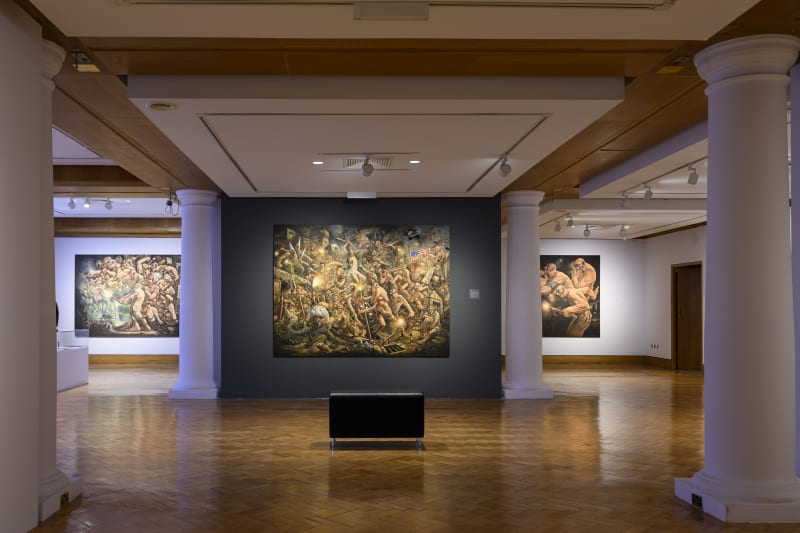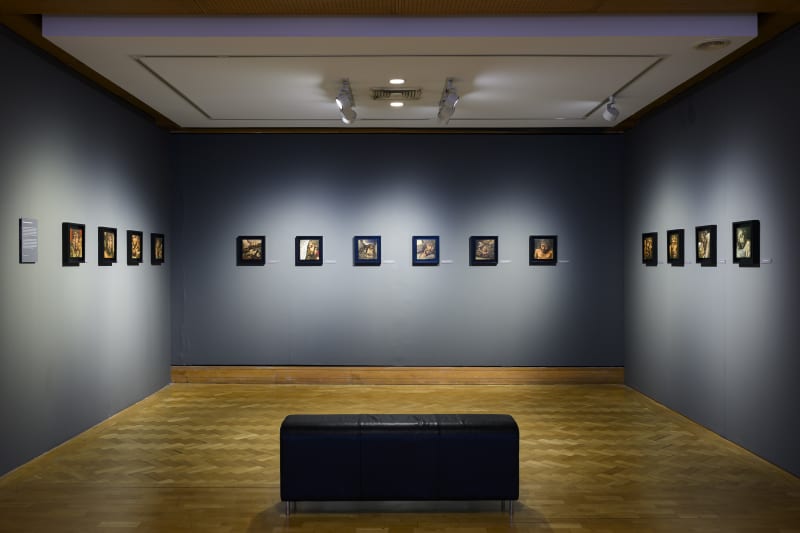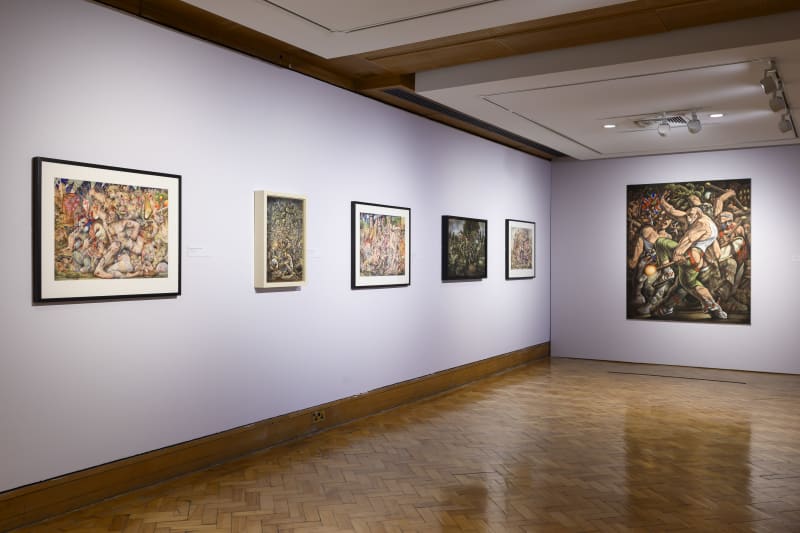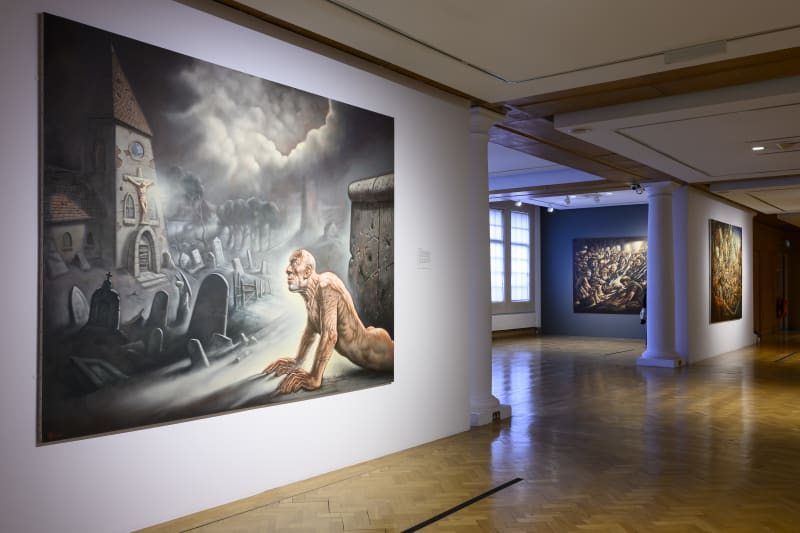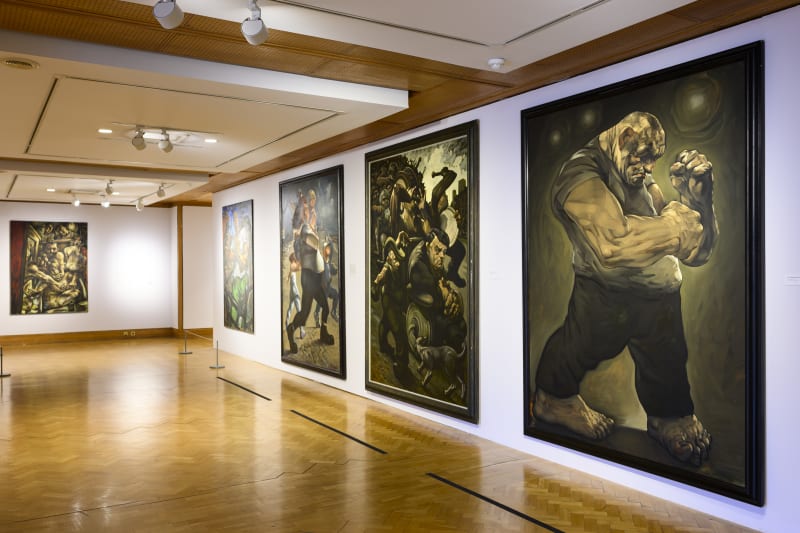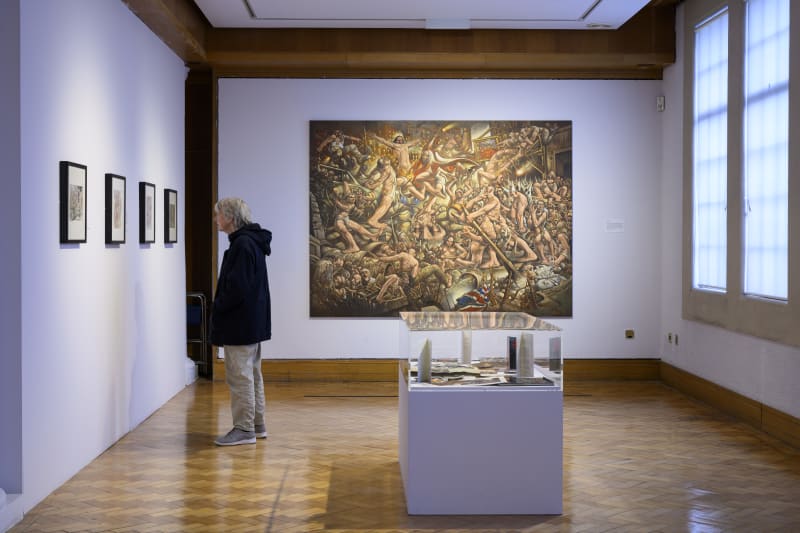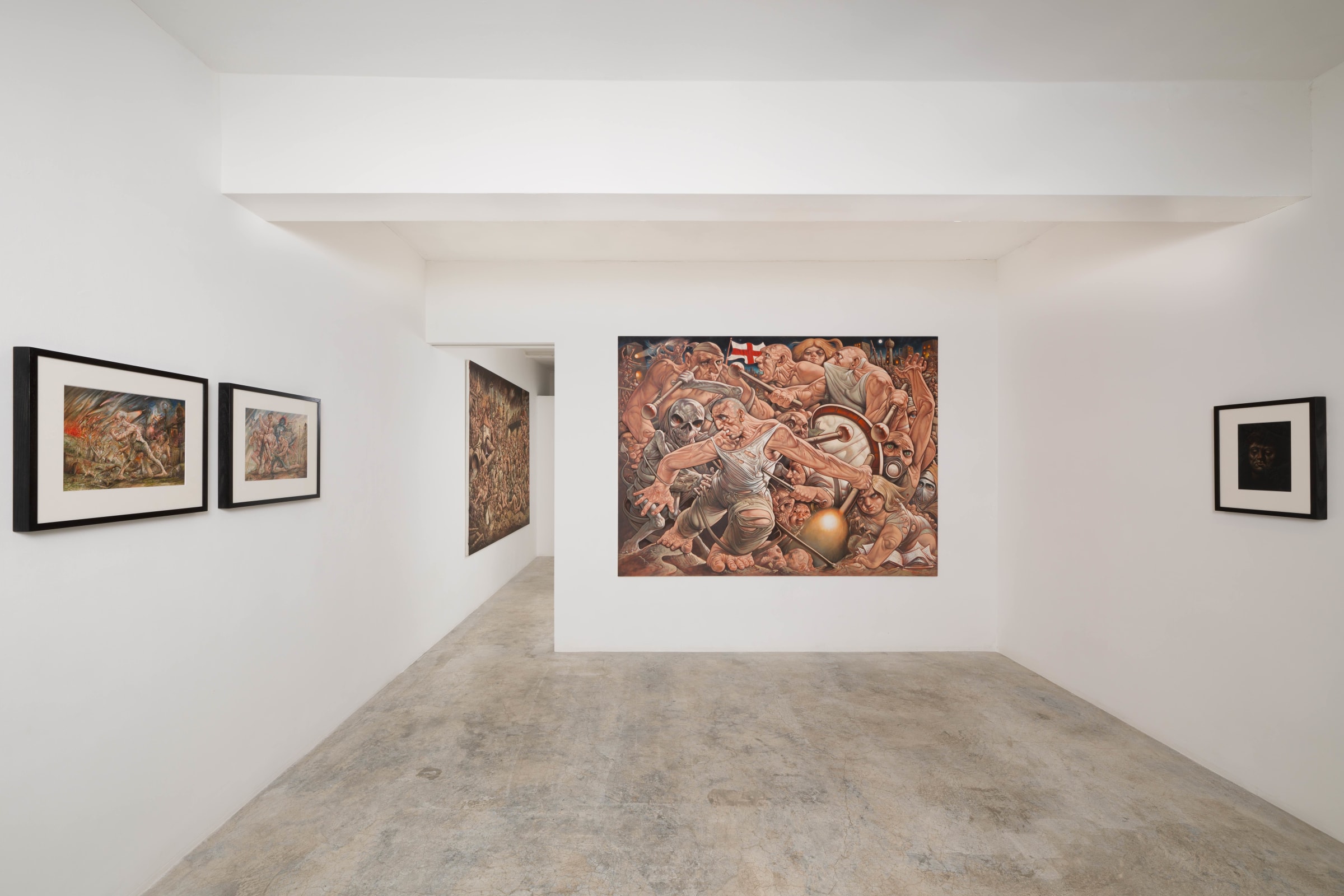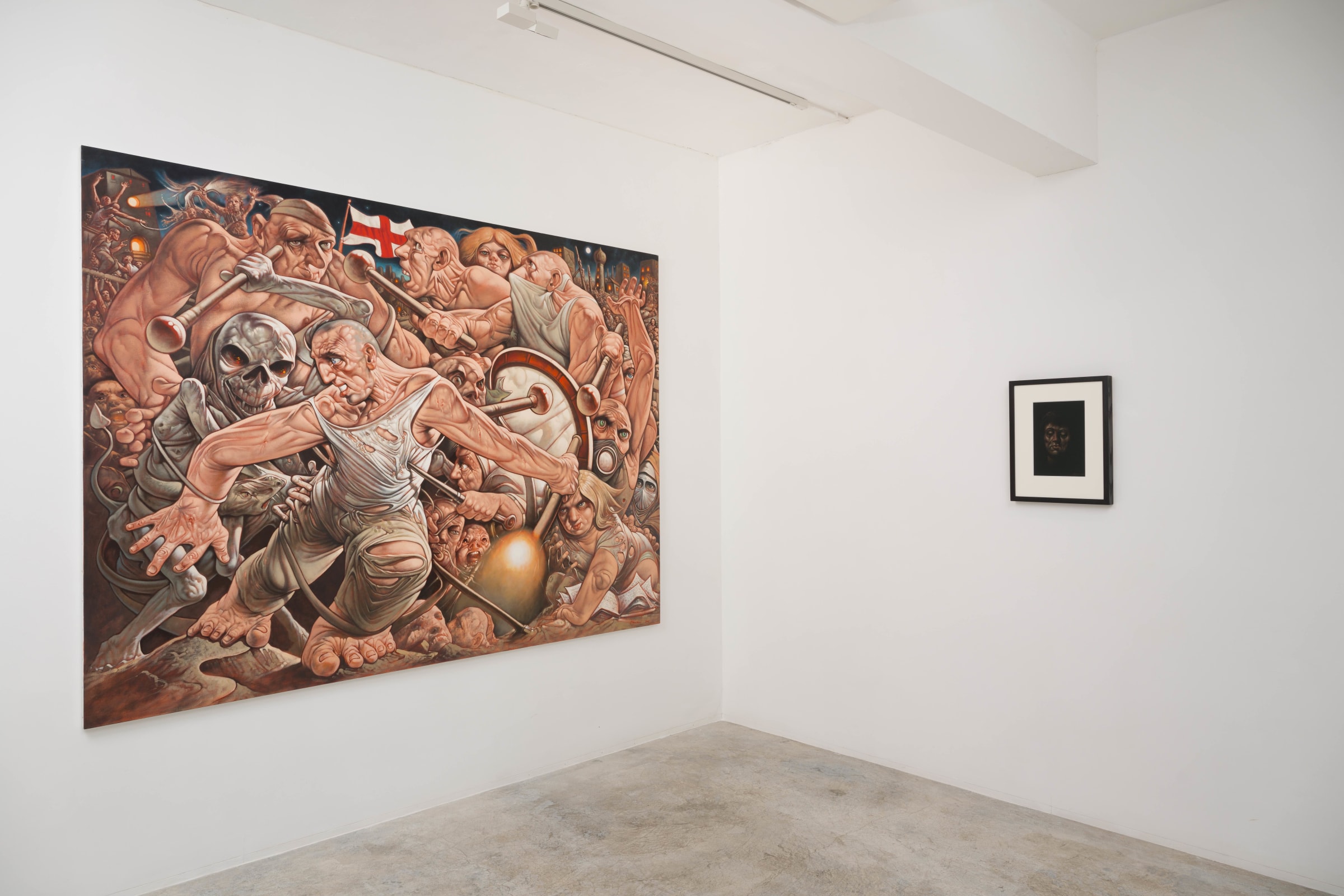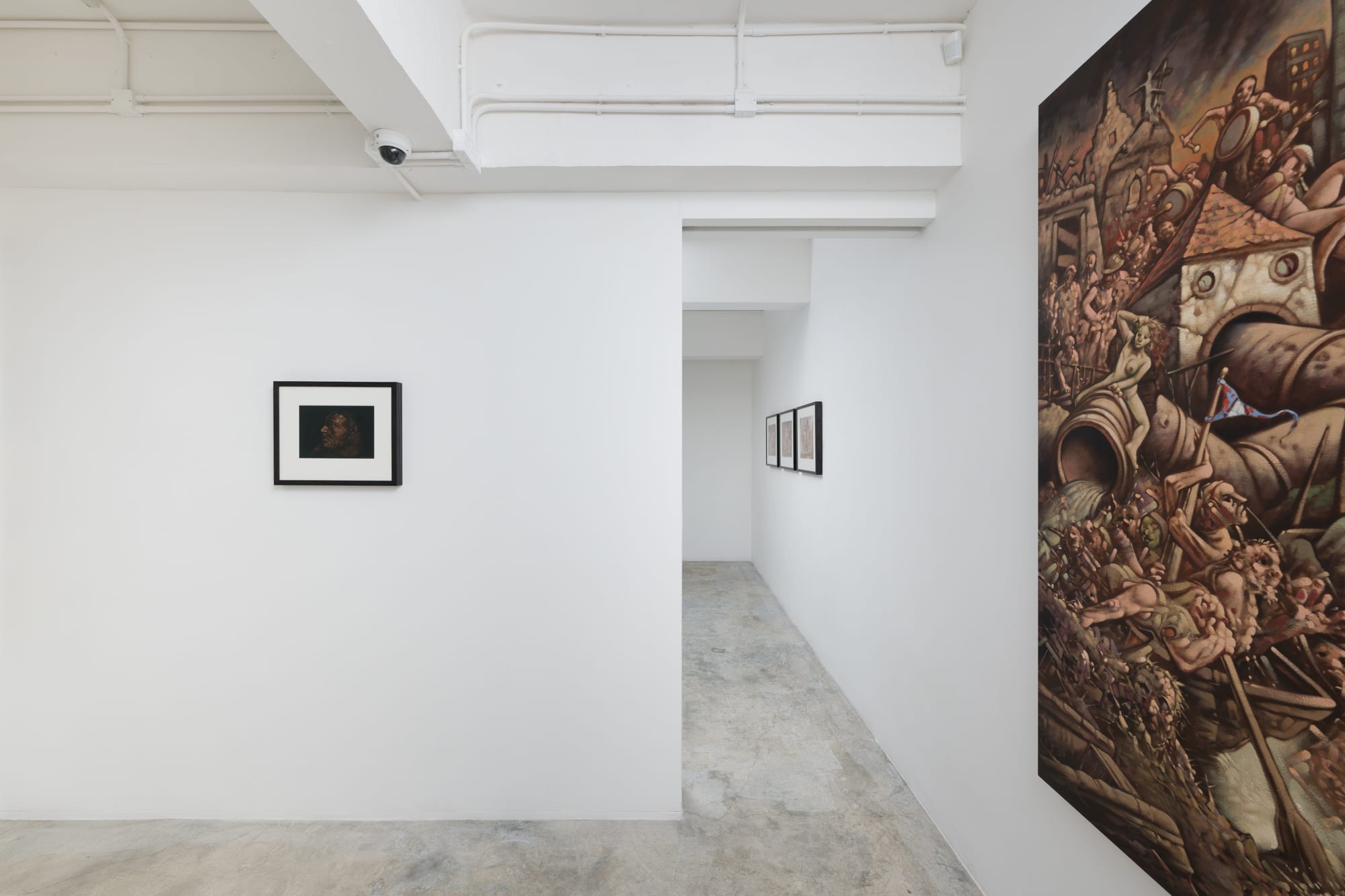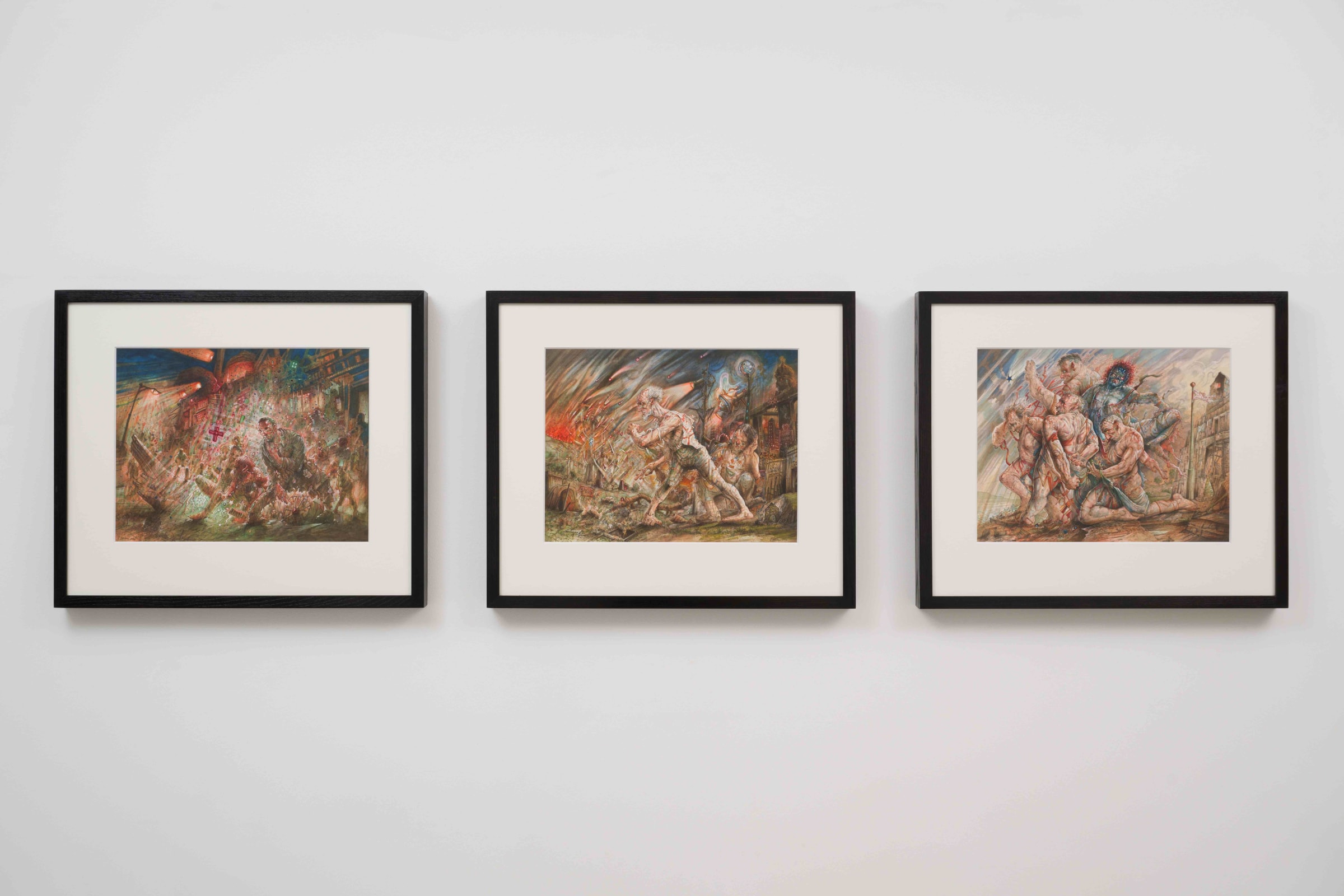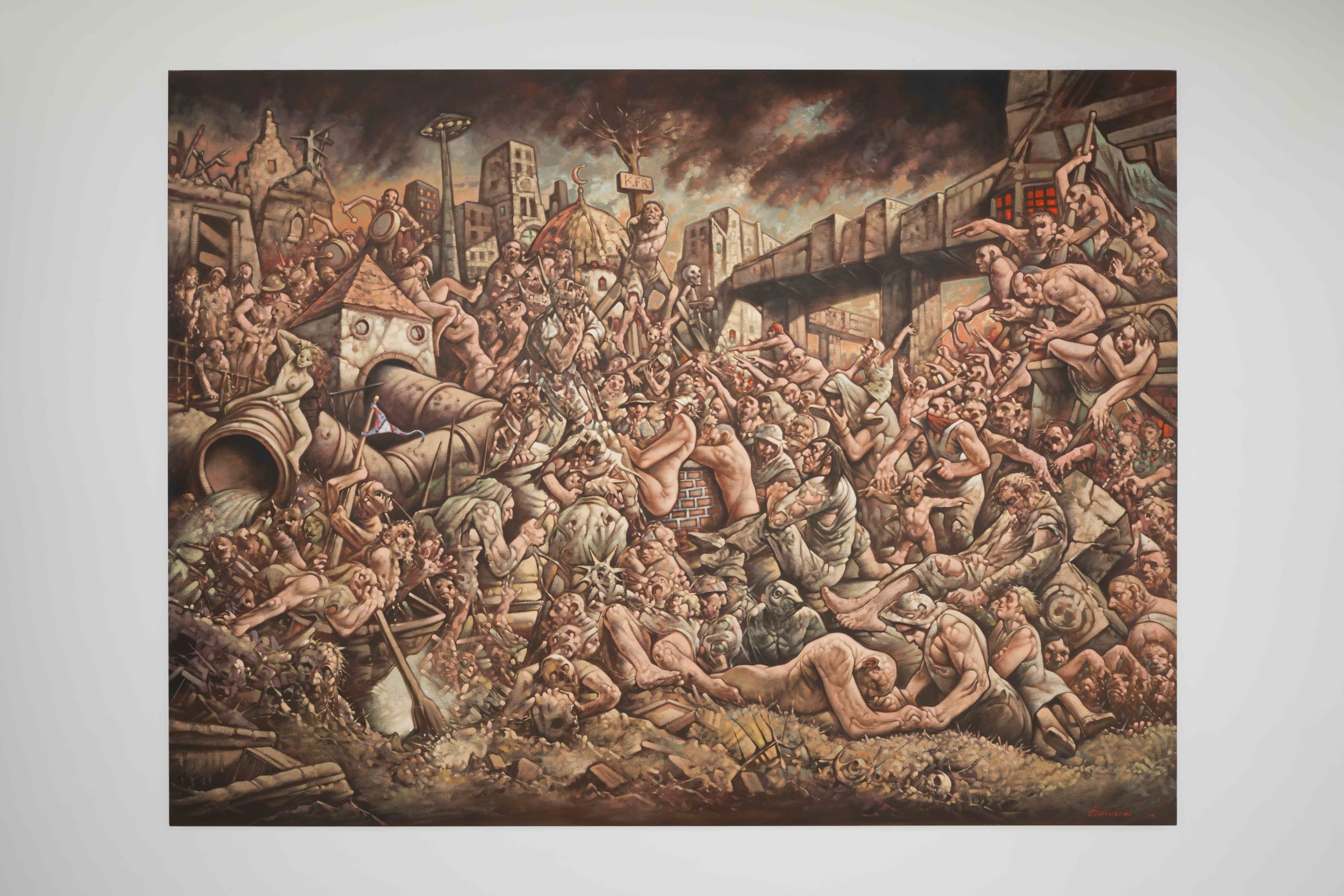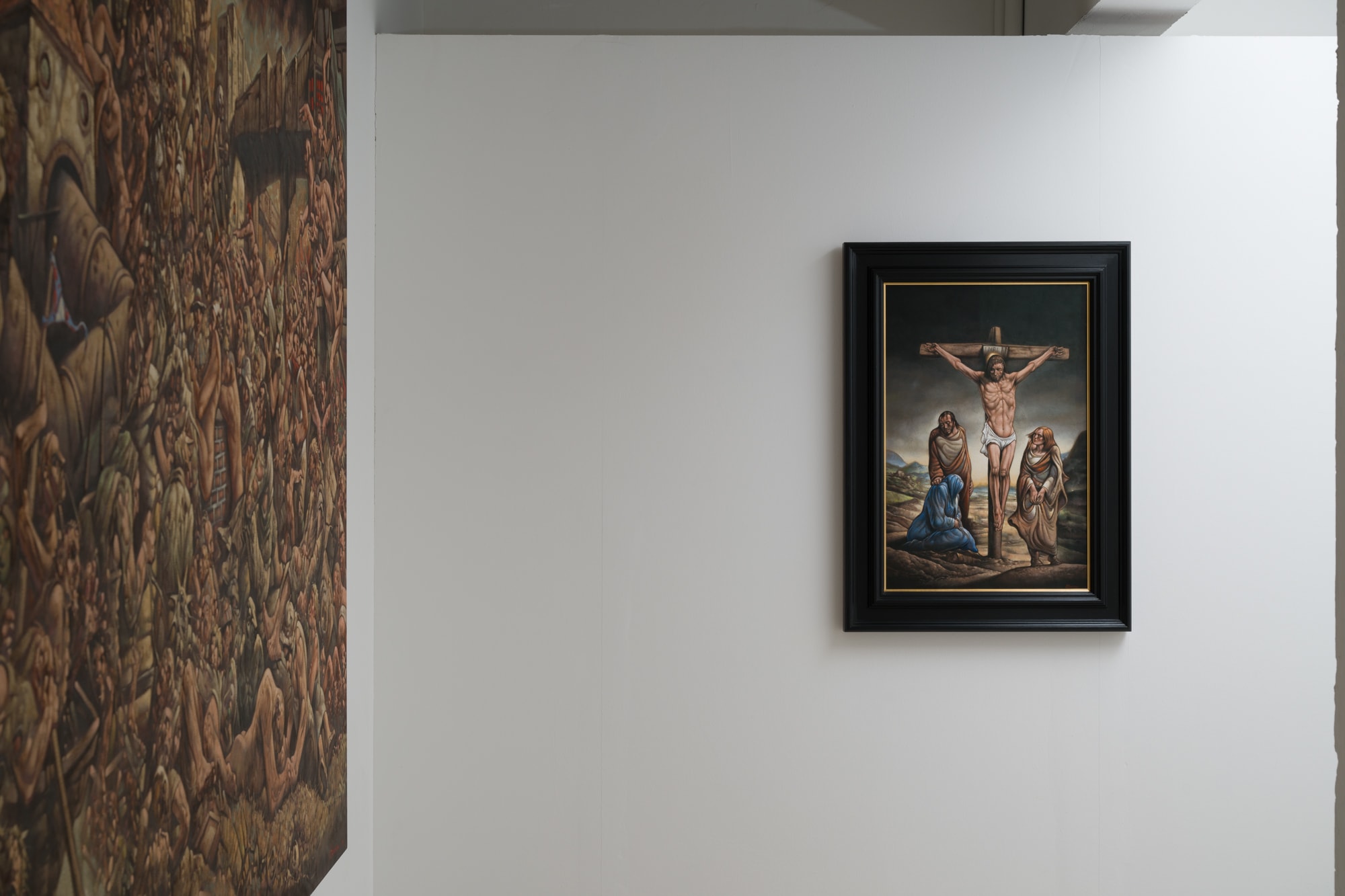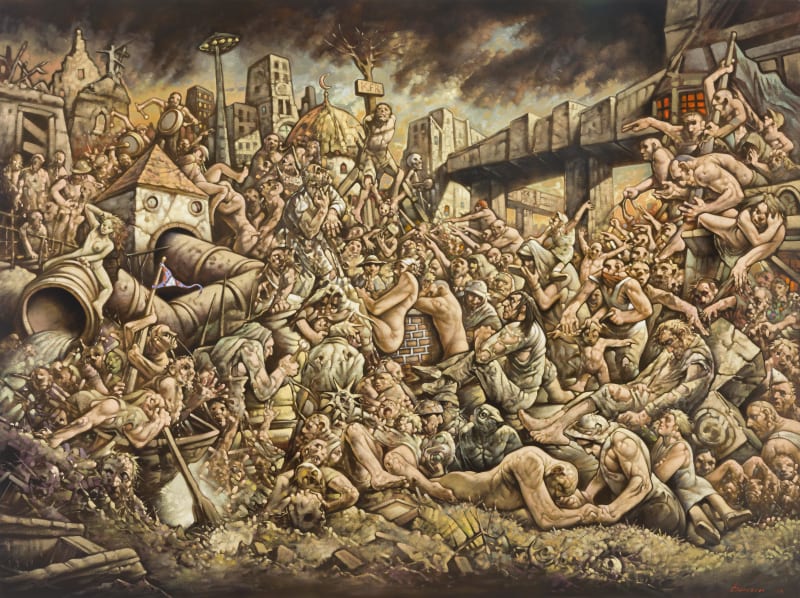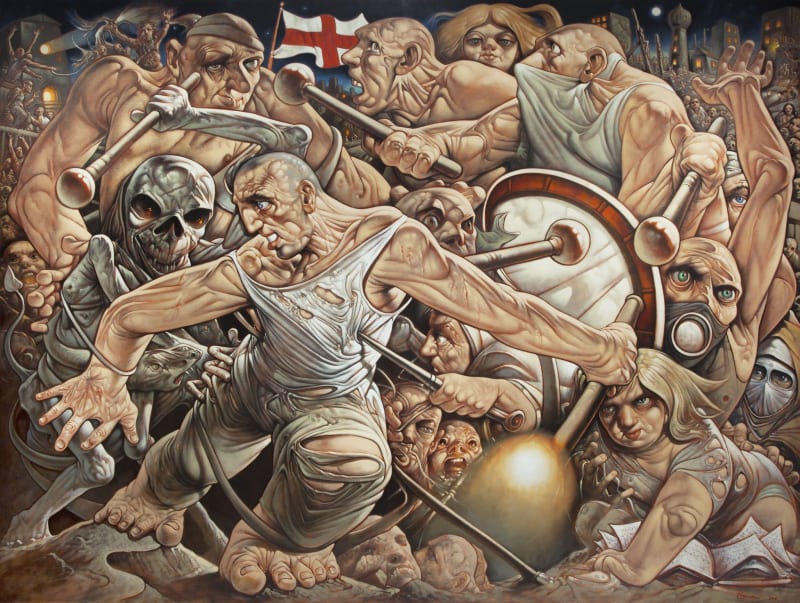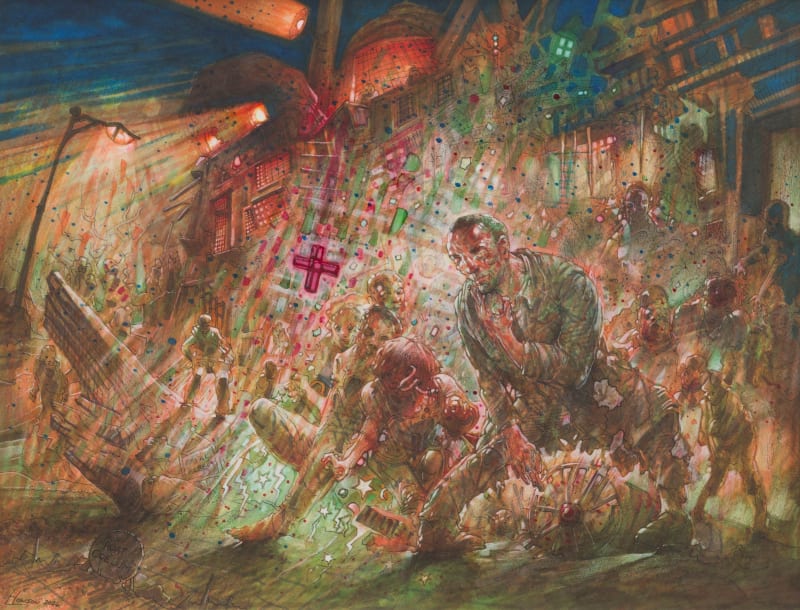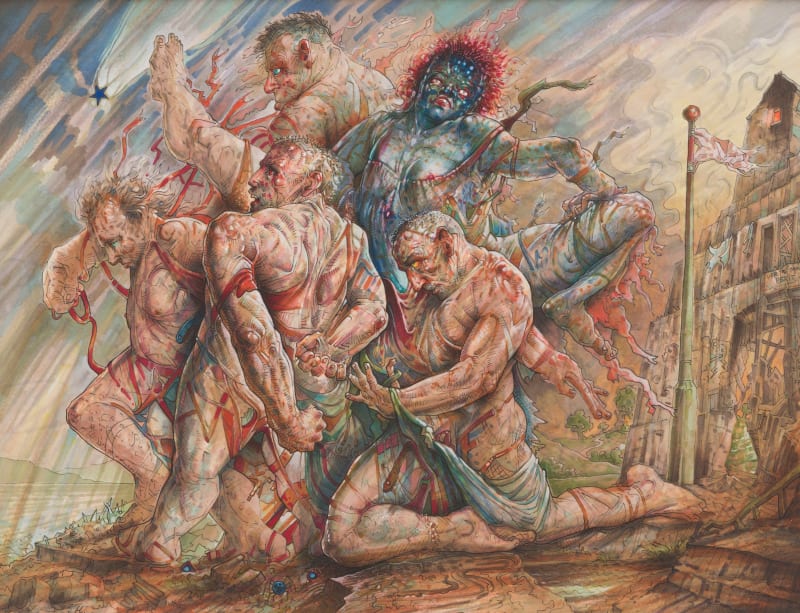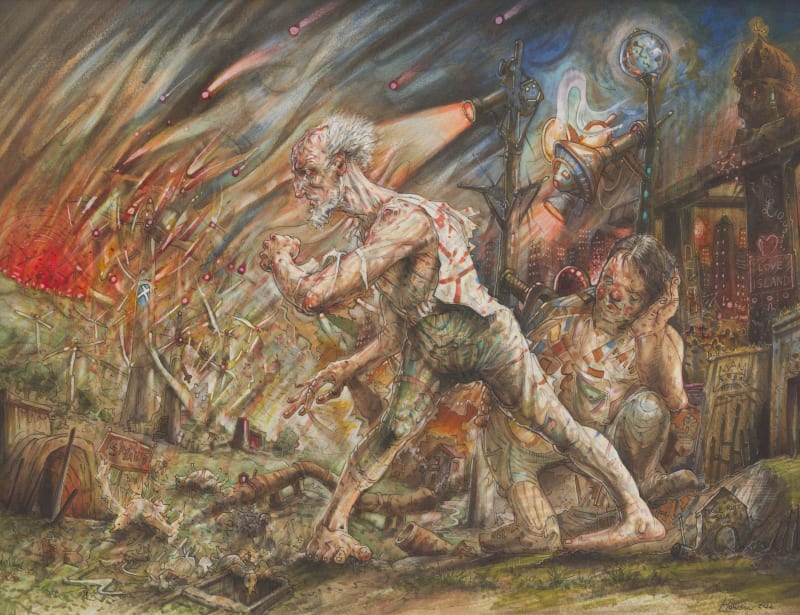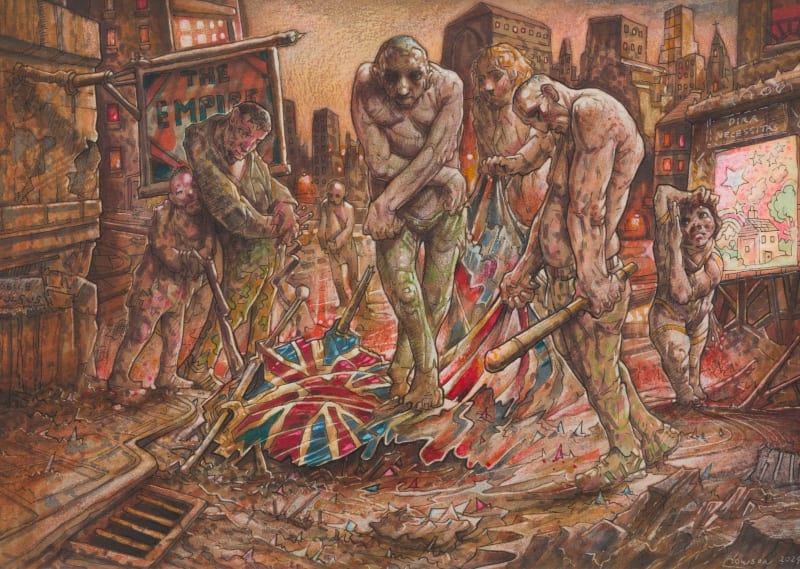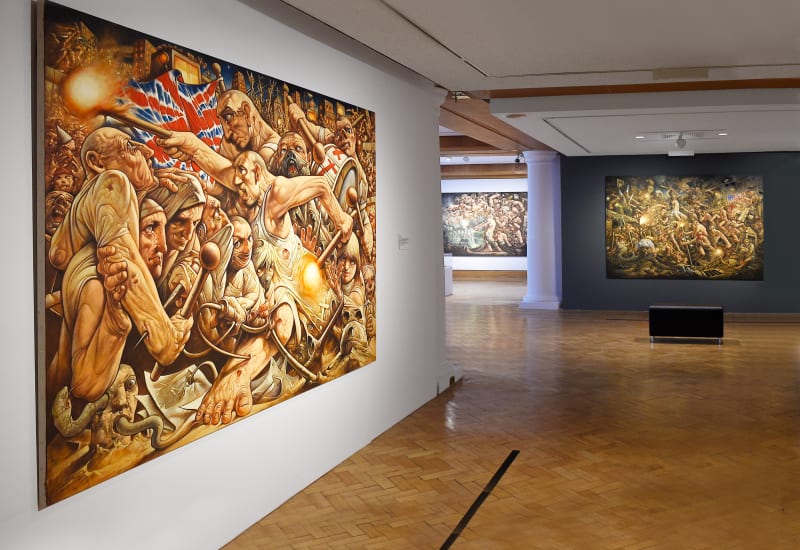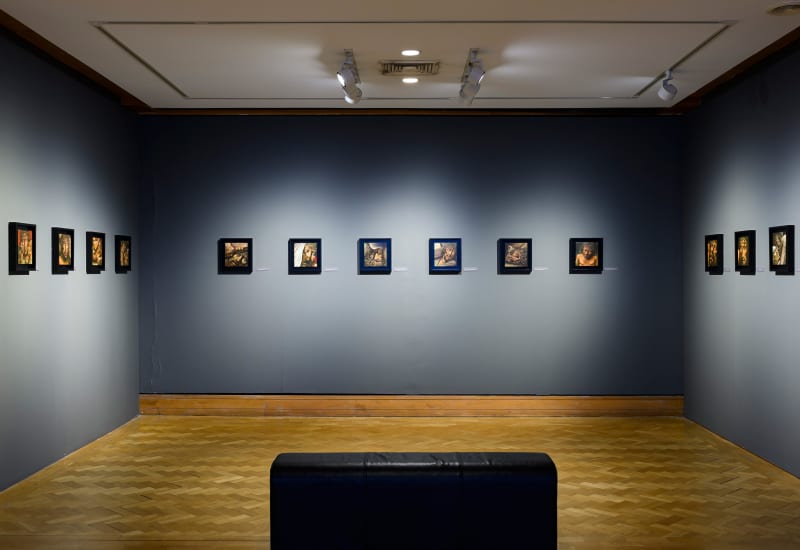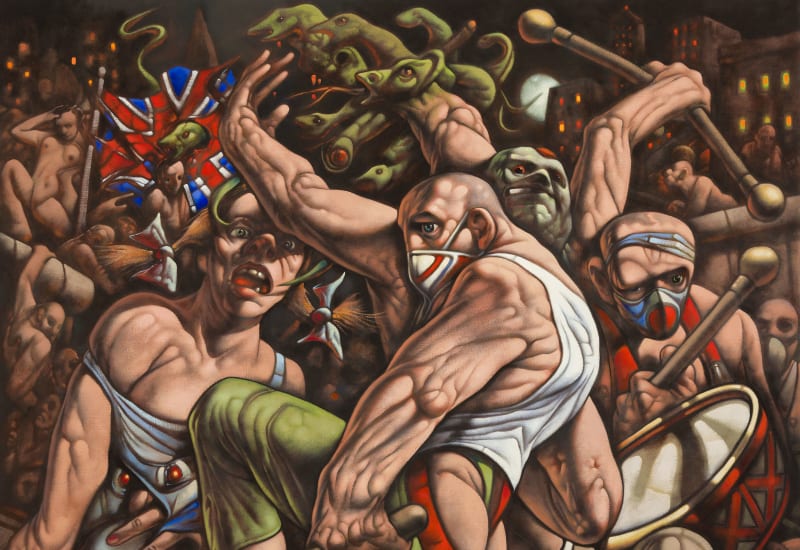Overview
Considered one of his generation's leading figurative painters, Peter Howson was a focal member of a group of young artists to emerge from the Glasgow School of Art in the 1980s, known as the 'New Glasgow Boys.' Howson is renowned for his penetrating insight into the human condition, and his heroic portrayals of the mighty and meek.
Following Howson’s critically-acclaimed 2023 retrospective When the Apple Ripens: Peter Howson at 65 at Edinburgh City Art Centre, the exhibition features two major paintings, Luxuria (2018) and The Banner of Saint George (2015), on which the theme of the show is based, alongside a series of drawings on paper from 2023 - 2024.
News
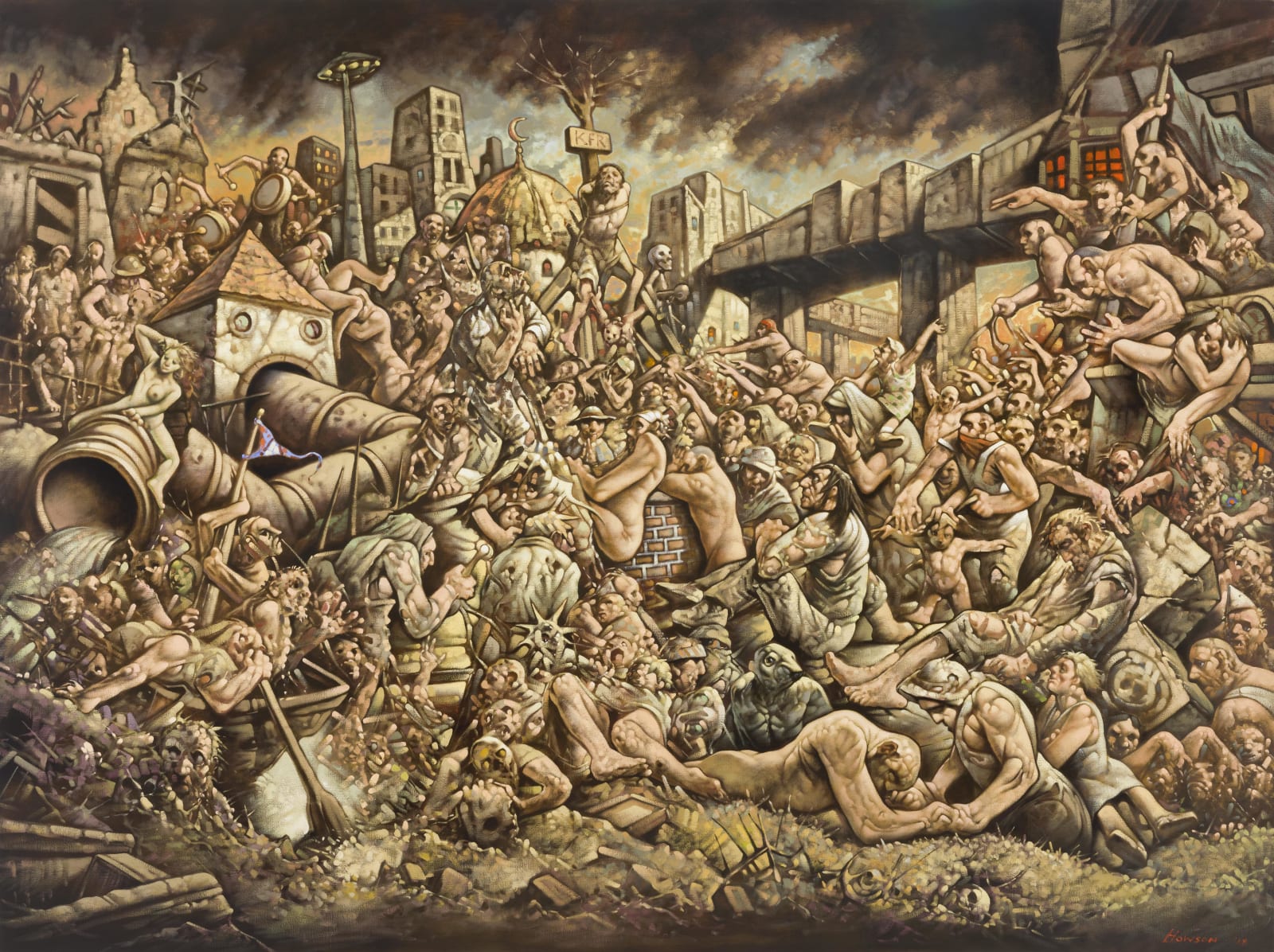
Peter Howson: Luxuria
Luxuria (2018) visualises a densely populated world in decline, depicting figures engaged in a struggle for survival. Howson constructs a compelling narrative that delves into themes of conflict, destruction, human suffering, and redemption. Often drawing on Latin phrases for the titles of his artworks and exhibitions, Luxuria translates to a state characterised by excess and extravagance.
Through the interplay of the title and the painting's imagery, Howson critiques the repercussions of a life driven solely by desire and passion, ultimately portraying a self-indulgent society in decline. This painting was a highlight of Howson’s 2018 solo exhibition Acta Est Fabula at Flowers Gallery, which marked the 25th anniversary of his first visit to Bosnia in 1993, where he served as Britain’s official war artist documenting the Bosnian War. This period significantly influenced Howson's artistic practice, as it coincided with the growing prominence of right-wing politics in the United Kingdom.
The apocalyptic element in Luxuria (2018) was influenced by the experiences surrounding Brexit and the resultant surge in populism following the referendum. Drawing inspiration from the politically and socially charged works of German artists Otto Dix (1891-1969) and Max Beckmann (1884-1950), Howson offers a poignant portrayal of the far-right threat, serving as a cautionary reflection for humanity.
The Banner of St. George (2015) illustrates a tumultuous scene characterised by chaotic interactions, symbolising the disintegration of social order into violent struggles for dominance.
The title alludes to St. George, the patron saint of England and Georgia, who is revered as one of the fourteen auxiliary saints. He has come to represent the culture, values, beliefs, and identity of the English people. St. George, an early Christian martyr, epitomised martial valor and selflessness during the Middle Ages. His significance as a religious emblem has been prominent throughout English history, particularly established during the Tudor period, owing to his popularity during the Crusades and the Hundred Years' War. The English flag, which features a red cross on a white background, derives from St. George's emblem and is prominently displayed above the tumult in the composition.
The Pietà: Standing at the Foot of the Cross
Works on Paper
When the Apple Ripens: Peter Howson at 65
